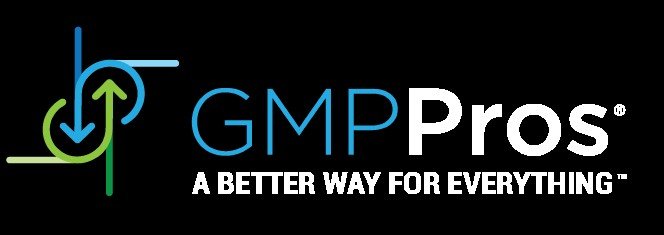
When businesses talk about building lasting customer relationships, the phrase Executive Business Review (EBR) often comes up. But what is an EBR, and why should leaders—from startup founders to HR professionals—pay attention?
An EBR is not just another routine meeting. It’s a structured conversation with your customers where you step back from day-to-day issues and look at the bigger picture: their goals, your performance, and how the partnership can grow. Done right, an EBR can strengthen trust, uncover new opportunities, and ensure your work aligns with the customer’s strategy.
In this article, we’ll explore what makes an EBR valuable, how to run one effectively, and practical steps you can apply in your next meeting.
What is an EBR?
An Executive Business Review (EBR) is a scheduled meeting—often quarterly—between a company and its client’s key decision-makers. The purpose is to:
-
Review performance and outcomes
-
Align goals and expectations
-
Identify opportunities for growth
-
Strengthen long-term partnership
Unlike weekly check-ins or project updates, an EBR focuses less on tasks and more on strategy. Think of it as a “big picture” conversation where both sides step back to ask: Are we headed in the right direction together?
Why EBRs Matter
For remote leaders, project managers, and startup founders, EBRs provide clarity and momentum. They:
-
Build trust: Customers see you as a partner, not just a vendor.
-
Create alignment: Keeps projects tied to customer goals.
-
Spot opportunities: Open doors to new initiatives or services.
-
Show accountability: Performance data builds transparency.
When done poorly, EBRs can feel like a sales pitch or a routine report. But when handled with intention, they become a platform for shared success.
The Structure of a Strong EBR
The most effective EBRs have a clear flow. Here’s a simple structure to follow:
| Section | Purpose | Example Topics |
|---|---|---|
| Introduction | Set the tone, revisit goals | Acknowledge milestones, frame agenda |
| Performance Review | Show results and progress | Metrics, KPIs, customer satisfaction |
| Customer Priorities | Listen and understand | New goals, market shifts, challenges |
| Strategic Alignment | Connect your work to their strategy | Roadmap updates, service adjustments |
| Future Opportunities | Identify areas for growth | Expansion, new solutions, innovation |
| Next Steps | Confirm action items | Owners, timelines, follow-up |
This structure ensures the meeting feels balanced—not just about your work, but about their needs.
Best Practices for Running an EBR
1. Prepare with Purpose
Don’t walk in with a generic slide deck. Tailor the conversation to the customer’s current goals. If their focus has shifted—say, from growth to cost savings—your content should reflect that.
2. Share Data, Not Just Stories
Numbers build credibility. Metrics like ROI, adoption rates, or engagement trends show impact. But avoid drowning the customer in charts. Instead, highlight insights: What does this data mean for their strategy?
3. Invite the Right People
An EBR works best when executives and decision-makers are at the table. Their perspective on long-term goals will shape how you align.
4. Listen More Than You Talk
Many companies treat EBRs as a stage to showcase achievements. The real value comes when you listen deeply to the customer’s needs and challenges.
5. End with Clarity
Summarize next steps in plain language. Everyone should leave knowing who owns what and when progress will be revisited.
Common Mistakes to Avoid
-
Turning it into a sales pitch: Customers want strategy, not a product demo.
-
Overloading slides with detail: Simplicity builds clarity.
-
Ignoring the customer’s voice: EBRs should be a two-way exchange.
-
Skipping follow-up: A strong recap email ensures accountability.
Bringing It to Life with GMP Pros
At GMP Pros, the focus on EBRs goes beyond process. The company believes that growth conversations should be practical, customer-driven, and actionable. Instead of one-size-fits-all reviews, GMP Pros helps teams build frameworks that adapt to different industries and priorities.
For example, a remote HR leader may use an EBR to explore how employee engagement programs are affecting retention. A startup founder might use it to evaluate how their product adoption aligns with a client’s scaling goals. GMP Pros emphasizes structured yet flexible EBRs that turn customer feedback into real strategic momentum.
You can learn more about how GMP Pros approaches client success here: GMP Pros
How to Turn EBRs into Growth Conversations
An EBR should never feel like a box to check. With the right approach, it can become one of the most powerful tools in your customer success playbook.
Here’s a simple checklist for your next EBR:
-
Have we aligned the agenda with the customer’s priorities?
-
Are we sharing data that connects directly to their goals?
-
Do we know who needs to be in the room?
-
Are we leaving enough space for the customer’s perspective?
-
Have we defined clear next steps?
By treating EBRs as strategic, not transactional, leaders can transform customer relationships into engines of growth.
Final Thoughts
So, what is an EBR? At its core, it’s a structured conversation designed to strengthen partnerships and align strategy. When leaders use EBRs to listen, adapt, and collaborate, they open the door to deeper trust and long-term growth.
Whether you’re a remote project manager, a startup founder, or an HR leader building culture, EBRs give you the chance to step back and ensure you’re not just working hard—but working in the right direction.

